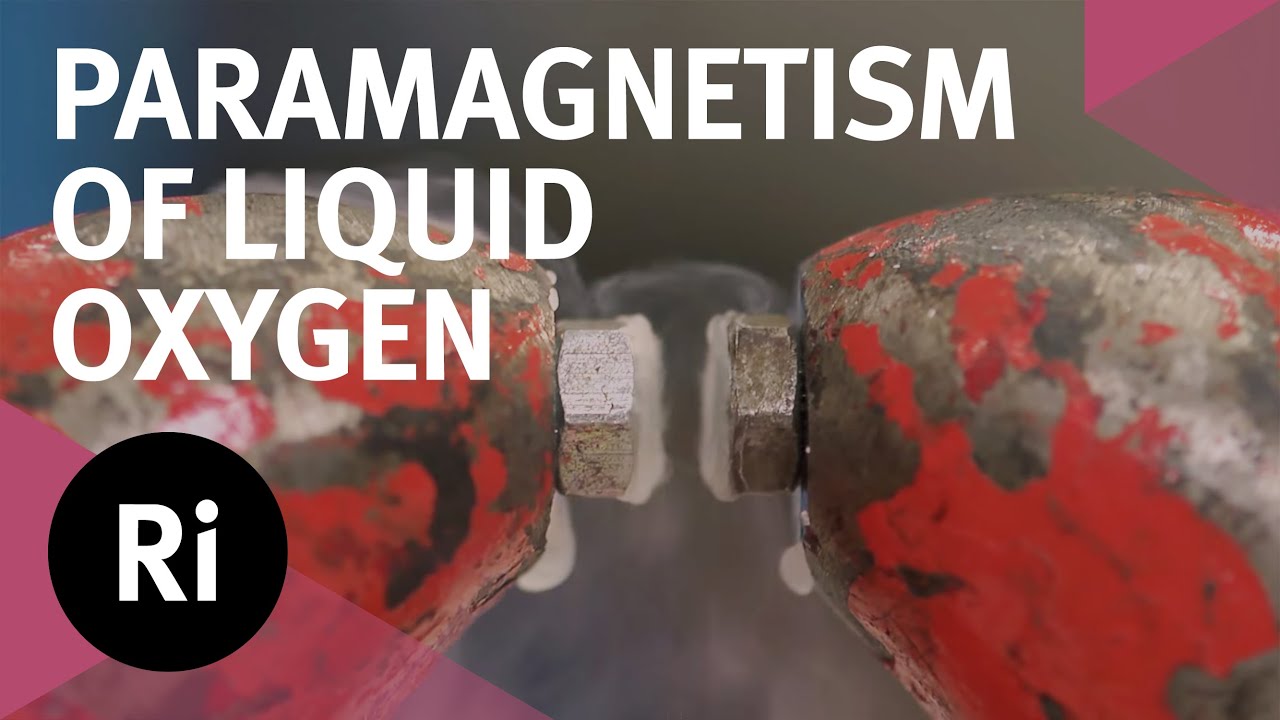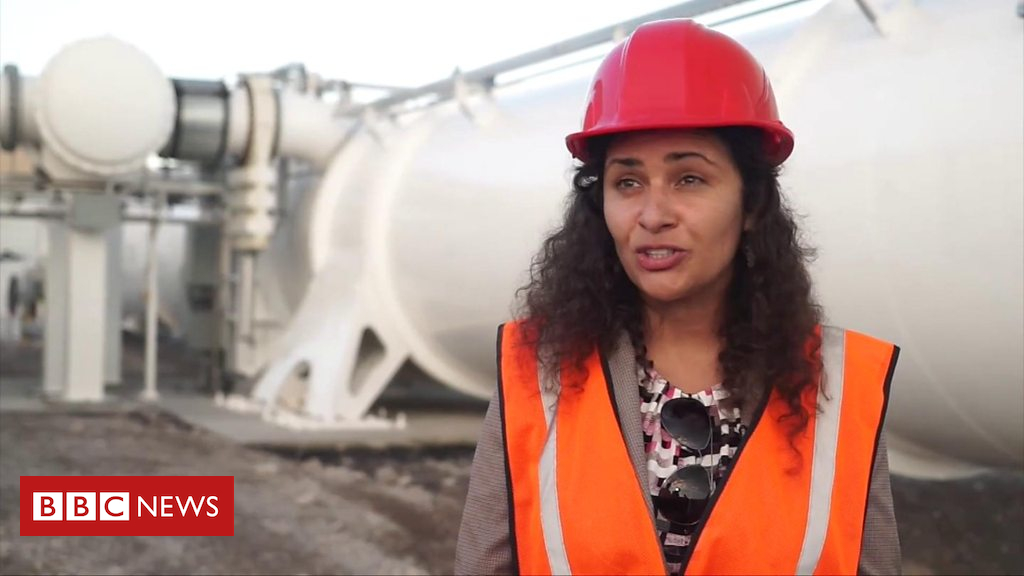The Royal Institution
Following in Michael Faraday’s footsteps, Demo Technician Andy Marmery explores the paramagnetic properties of liquid oxygen at the Royal Institution in London.
The liquid oxygen is prepared by passing oxygen gas through a copper coil immersed in a beaker of liquid nitrogen. The oxygen has a higher boiling point than nitrogen meaning that it condenses in the coil.
Andy then demonstrates the paramagnetic properties of liquid oxygen by pouring it between two poles of a large magnet.
Michael Faraday discovered that the magnetic properties of gases depended on the temperature of the gases as well as the gaseous medium in which he conducted his experiments. He first observed that oxygen behaved magnetically, rather than diamagnetically, at the Royal Institution in 1847.
Watch more Tales from the Prep Room:
https://www.youtube.com/playlist?list=PLbnrZHfNEDZyfUXqroIlSf2hOznnThqM0
The Ri is on Twitter: http://twitter.com/ri_science
and Facebook: http://www.facebook.com/royalinstitution
and Tumblr: http://ri-science.tumblr.com/
Our editorial policy: http://www.rigb.org/home/editorial-policy
Subscribe for the latest science videos: http://bit.ly/RiNewsletter
Source




it gets larger, even if briefly.
Still, wouldn't spilling liquid oxygen on his hands be a whole hell of a lot worse than having to pull off and properly dispose of flammable gloves?
Well he would know pretty quickly if his hand was covered in liquid oxygen whereas he wouldn't know if his glove was covered in it… Then he lit a match… do you see where I'm going?
So is water blue because of oxygen?
looks like fire having and orgasm.
the dosen't seem blue to me it just looks slightly cloudy if a little green.
And that, is easily worth a sub
What is if you pour in normal water between the magnet?
Extreme frost damage in your mouth, I suppose.
Firstly, I'm assuming you know that pure water is only very faintly blue, but the answer is no, because the oxygen in water has no unpaired electrons.
The colour of water is created by the fact that the bonds between hydrogen and oxygen flex and stretch, and this is excited by light in the infrared and slightly in the red of the visible spectrum. Therefore water absorbs a small amount of red light, making it appear blue.
What's the temperature of liquid oxygen?
Is it dangerous if that spilled in his hand?
Oxygen is flammable
Try it at home – get two magnets and hold them either side of running water.
Your hands are warmer and have a higher specific heat capacity than latex gloves – the gloves would freeze and the liquid oxygen would be allowed to condense, whereas a small amount of liquid oxygen on a warm hand would quickly boil off and become not a problem.
I wouldn't like to risk freezing my hand to a glove.
Is there a reason for that condom-like tip at the end of the glass tube?
That's just the way the glass was blown. WAIT.. THAT ISN'T WHAT I MEANT.
Yes, because if you drop liquid nitrogen on your hands, it just boils up on top of your hand, with a gap of air in between. giving you enough time to throw it off onto the floor for it to safely evaporate.
the magnetic dipole moment that each electron contributes is from the electron's spin, right?
Nope. 🙂 Unsafe practices like that would get you reprimanded in a lot of labs.
Everyone says that right up until they spill liquid nitrogen on their fingers. 😉
Why doesn't gaseous oxygen exhibit the same property? Does it, but because the random movement of gases stop the alignment, and cancel it out ? Or is it to do with gaseous oxygen being O2 so those unpaired electrons are used in bonds… Does this mean in liquid oxygen the O2 bond is broken!? … Wouldn't that cause a big cooling effect?!! So many questions, this phenomenon is so cool… No pun intended.
That's a big ass test tube
For reference, the liquid oxygen he's working with would be around -300 degrees Fahrenheit, or -180 degrees Celsius. It's only 90 degrees Celsius away from the theoretical temperature at which the movement of atoms becomes impossible (0K)
doesn't look blue at all to me
I thought it was Dewar who demonstrated the paramagnetism of liquid oxyxgen at a Friday lecture at the RI
I know this is an older post (2013), but hopefully I get an answer.
First of all, thanks for the science vids. Always most educational and entertaining.
Next, I know if you put some liquid N2 into a aluminum cup, the atmospheric O2 will condense on the outside of the cup.
What would happen if you pumped just general atmosphere thru your cooling coil ???
what would liquefy first out of the atmospheric air, and if you get more than one (O2, CO2, Argon ???) how could you separate it ???
(If you had the time to separate it before it evaporated ???)
many thanks!
what would happen if you drank liquid oxygen?
Thanks
Could liquid oxygen put out a fire, not by starving it of oxygen like co2 does but cooling it below the activation energy like water? For example, if he dropped the match in the liquid oxygen flask what would happen?
Man's working with oxygen and he doesn't know how to breathe.
A no glove genius. Duh